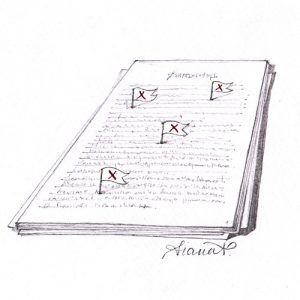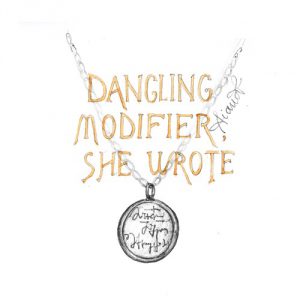Common preposition errors don’t escape a skilled proofreader’s eye. While there are rules that govern it, English preposition usage is often idiomatic. So, even if some expressions sound illogical (like center around), they may be correct. Here are some preposition examples inspired by the texts I’ve proofread. Learning more about these preposition errors and non-errors can help you make the right choice when writing a text that needs to be accurate. Read More
In spoken English or informal writing, the placement of only is rarely an issue, so go with your ear. Here is an example:
Tea only tastes good when I’m sad. Tea tastes good only when I’m sad.
Both sentences have the same meaning: I like the taste of tea only when I’m sad.
In academic writing, though, be careful with the placement of modifiers to avoid introducing ambiguity and attracting criticism from reviewers.
Does the placement of only in a sentence matter?
In English, both it and they are used to refer to a company.
Example: According to the company, they (it) have (has) more than 50,000 employees.
The choice of pronoun depends on many things: context, type of written communication, house style, and more.
The common view is that in American English, company is referred to as it, whereas in British English, company is referred to as it or they, but they is more common. Read More
HTML, EU, and NATO are examples of acronyms. Merriam-Webster defines acronyms as words “formed from the initial letter or letters of each of the successive parts or major parts of a compound term”.
In some expressions, acronyms can be preceded by an indefinite article (a or an). But how do you choose the right indefinite article before acronyms?
The rule for indefinite articles before acronyms: an before vowel sound, a before consonant sound
Acronyms can be read as pronounceable words (for example, NASCAR) or as a series of letters (for example, BBC). It’s important to know how to pronounce an acronym, because the rule for choosing the right indefinite article before acronyms is based on pronunciation, not spelling. Read More
 No matter how much technology has advanced, English editing and proofreading can’t be left to computer programs. Grammar checkers—such as Microsoft Word’s built-in tool or Chrome extensions that check your grammar while you type—can spot many kinds of errors, but they ignore many others.
No matter how much technology has advanced, English editing and proofreading can’t be left to computer programs. Grammar checkers—such as Microsoft Word’s built-in tool or Chrome extensions that check your grammar while you type—can spot many kinds of errors, but they ignore many others.
Grammar apps are good at finding many misspellings, repeated words, usage and punctuation errors, and other blatant mistakes. But there’s a long list of what these apps can’t do. That’s why they won’t replace professional English editors anytime soon.
Here are just 10 things an English grammar checker tool cannot detect: Read More
 Unraveling the intended meaning of a flawed sentence is hard detective work for a reader. A dangling modifier is one of those errors that leave you wondering what the writer meant to say.
Unraveling the intended meaning of a flawed sentence is hard detective work for a reader. A dangling modifier is one of those errors that leave you wondering what the writer meant to say.
Experienced writers and editors know that they shouldn’t waste the reader’s time. Once you understand how to correct a dangling modifier, you’ll make things easier for the reader while strengthening your own writing.
In this post I’ll first explain what a dangling modifier is and then give you examples of dangling modifiers and show you how to correct them. Read More
